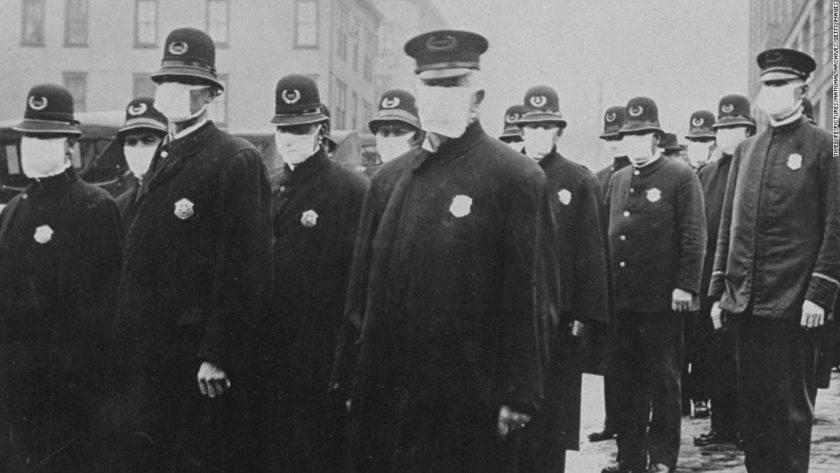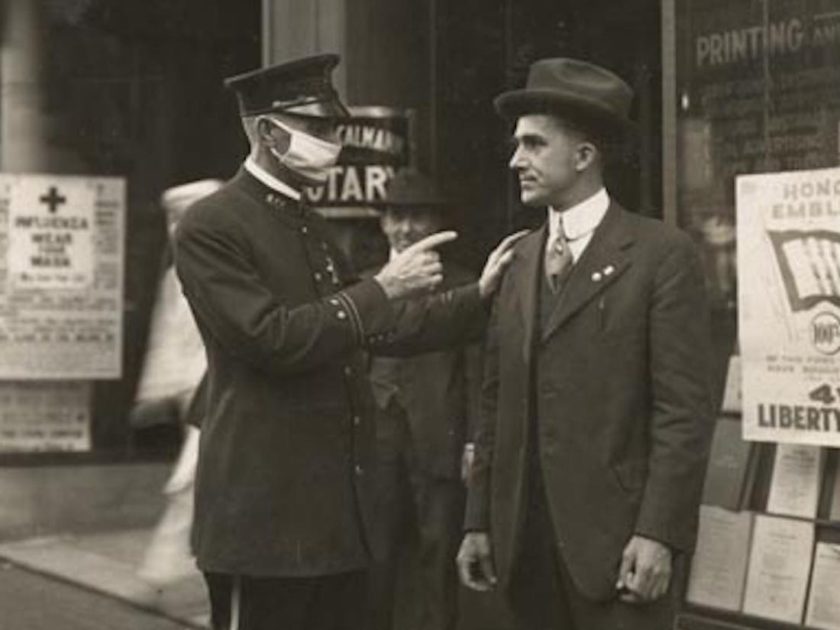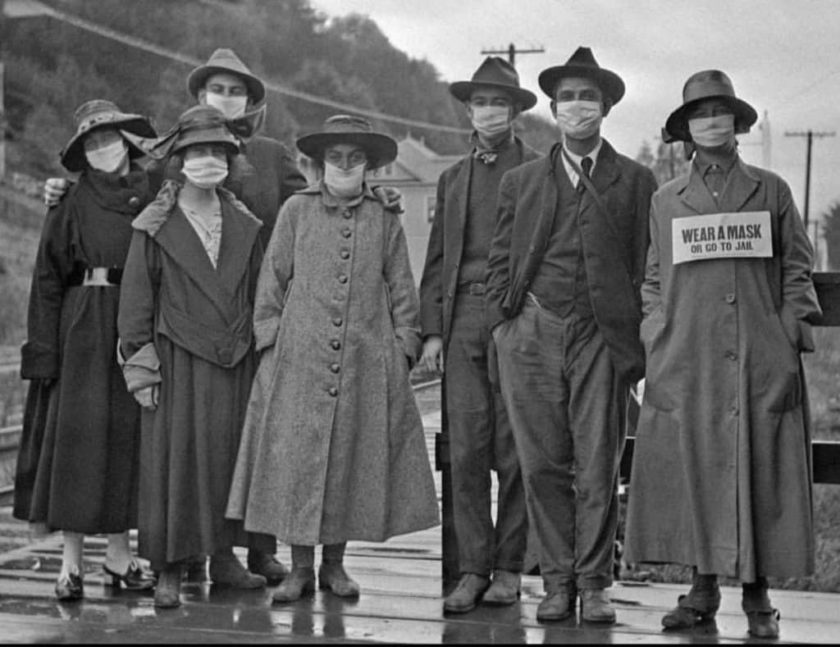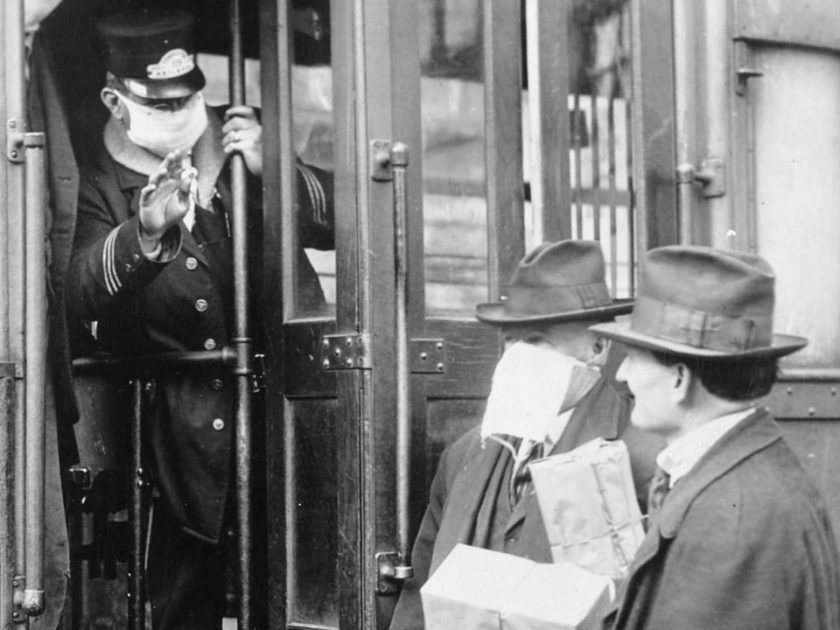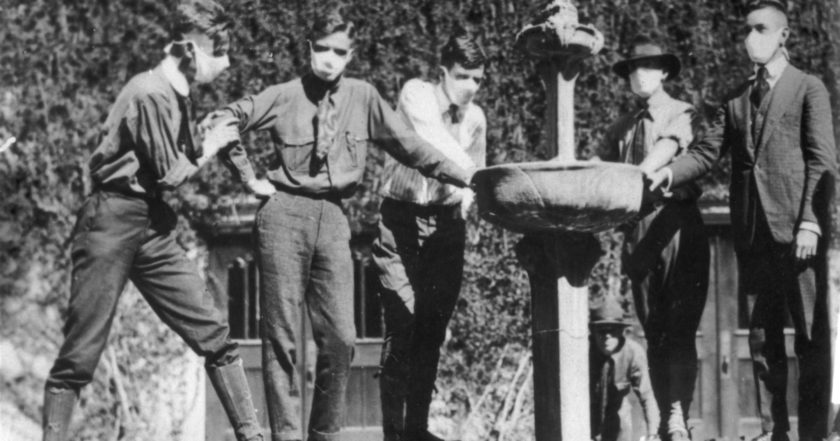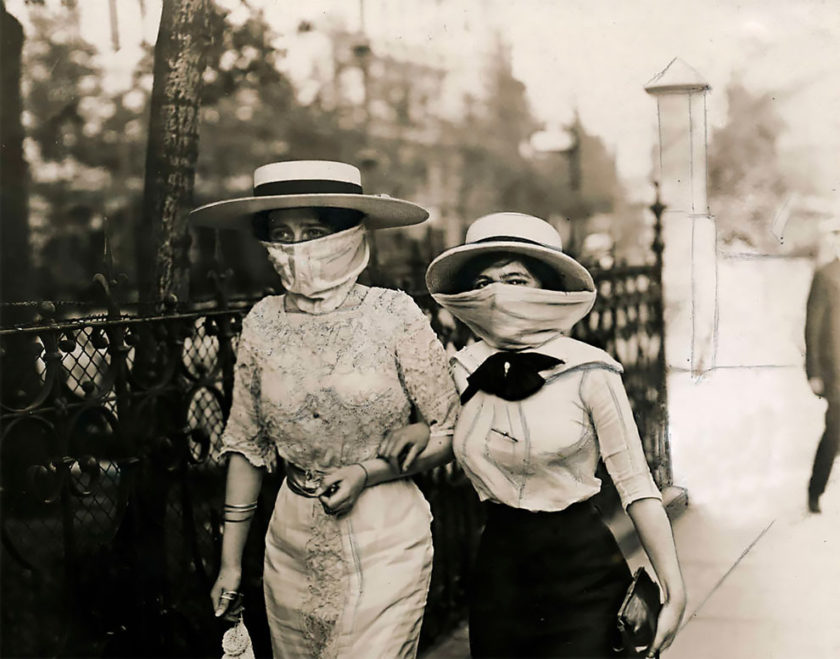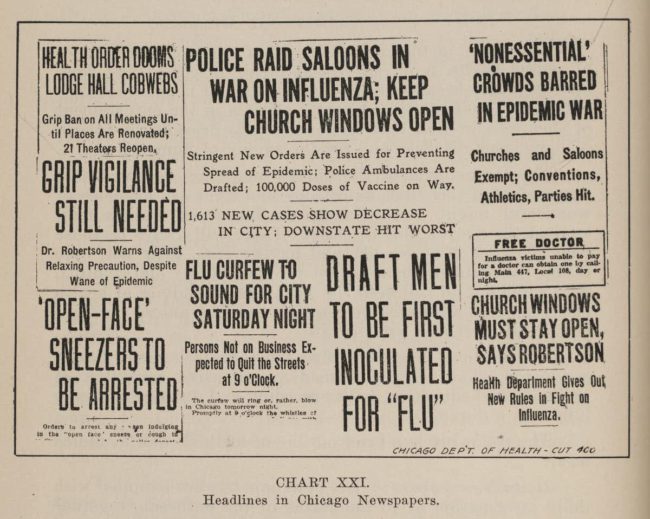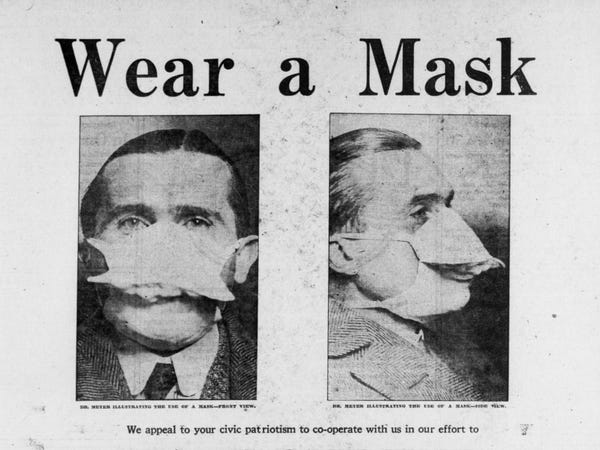
It is very bizarre to observe some being hostile to the idea of wearing face masks, and yet here we are. I’m not going to debunk the daft claims such as Oxygen deprivation, many others have done a fine job and I don’t need to add to that. Instead I’m asking if we have been here before.
We have.
History is repeating itself.
1918 and Masks
Did they use face masks in 1918?
Indeed yes, the wearing face masks became common in some places. Other measures that we have become familiar with were also deployed. Social distancing measures were introduced, they closed schools, theatres, and places of worship. They limited public transportation, and banned mass gatherings
Did some resist and refuse to wear face masks?
Again yes, this is all very familiar. There was even an Anti-Mask League of San Francisco. That was an organisation formed to protest the requirement for people in San Francisco to wear masks during that 1918 influenza pandemic.
Did the use of face masks help in 1918?
Yes, it very much did.
According to medical historians, the decline in deaths from influenza in San Francisco can be partly attributed to the mandatory mask-wearing policies.
We once got it very wrong
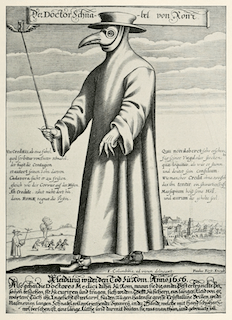
In the 1600s plague doctors wore bird-like masks. The thinking was that this would neutralise the so-called miasma in the air through perfumes and spices held under a mask.
In the late 1800’s our understanding vastly improved. We became aware of the existence of microscopically small living entities (google Louis Pasteur) and so we devised strategies to block them.
We are of course now all familiar with the concept of surgeons stopping germs from entering wounds. They do this by scrubbing everything … and of course wearing face masks. Face masks for surgery was first practised by Johann Mikulicz, head of the surgery department of the University of Breslau, in 1897. (google him for details). It quickly became widely adopted
This was not fancy dress, it was a strategy that was widely deployed because it was demonstrated to work.
Wearing Face Masks in 1918
Radically altering public behaviour is always going to be a very big challenge, and yet from a time when there was no hope of a vaccine and no treatment, doing nothing was not an option. The population was encourage to wear face masks and officials appealed to the population that doing this was their civic duty.
NGOs such as the Red Cross were rather blunt …
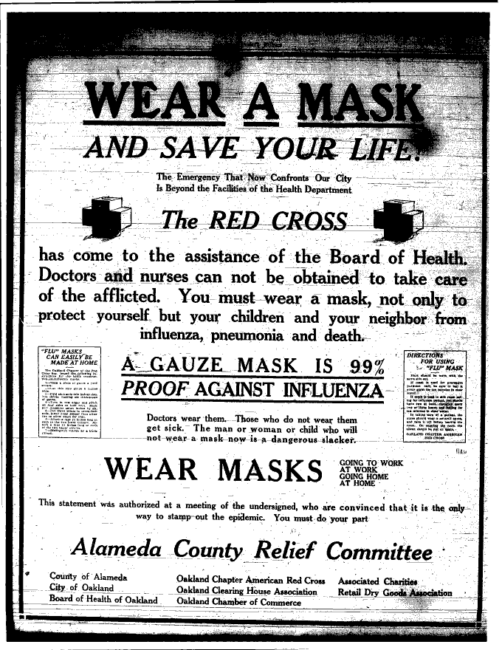
“the man or woman or child who will not wear a mask now is a dangerous slacker.”
Not wearing Face Masks soon evolved into crime that would involve the police or a fine. Understandably so because literally millions of lives were at risk.
We might think we live in a unique time. In some respects we do, but the past is not a blank page, the patterns of what we do now have echos from that not so distant past. When it comes to face masks, we have been here before. How we responded then is a very familiar pattern.
In 1918 most happily adopted the guidance given by experts, but just as now, they also had some who rejected such guidance and refused to wear face masks.
Resistance – a lack of common sense
Some politicians sternly refused. Take this newspaper headline from the time (in the image below see the article on the right about the Decline of Flu Cases Expected) …
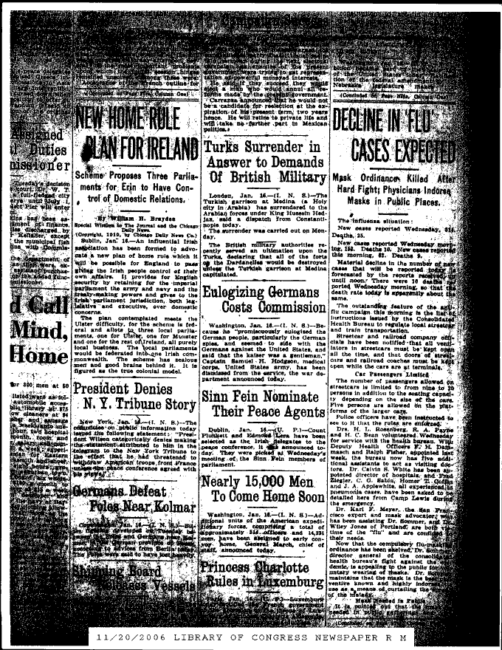
From that we read about one official at a very heated city council meeting declaring that a proposed mask wearing ordnance was …
“autocratic and unconstitutional,” adding that “under no circumstances will I be muzzled like a hydrophobic dog.”
For the places where such ordinances were passed, noncompliance was a big issue. From here …
When a mask order went into effect in Sacramento, the police chief instructed officers to “Go out on the streets, and whenever you see a man without a mask, bring him in or send for the wagon.” Within 20 minutes, police stations were flooded with offenders. In San Francisco, there were so many arrests that the police chief warned city officials he was running out of jail cells. Judges and officers were forced to work late nights and weekends to clear the backlog of cases.
…In San Francisco, however, initial noncompliance turned to large-scale defiance when the city enacted a second mask ordinance in January 1919 as the epidemic spiked anew. Many decried what they viewed as an unconstitutional infringement of their civil liberties. On January 25, 1919, approximately 2,000 members of the “Anti-Mask League” packed the city’s old Dreamland Rink for a rally denouncing the mask ordinance and proposing ways to defeat it. Attendees included several prominent physicians and a member of the San Francisco Board of Supervisors.
That last bit feels oh so familiar. It requires no imagination at all to envisage a crowd of MAGA folks doing exactly the same today.
Face Masks – What do we learn from History?
We know face masks work, there is evidence that verifies that …
- Nature Medicine (Apr 3, 2020) – Respiratory virus shedding in exhaled breath and efficacy of face masks
We also know that using face masks works in practise …
- (June 16, 2020) – Community Use Of Face Masks And COVID-19: Evidence From A Natural Experiment Of State Mandates In The US
The lesson from history is not one that addresses the effectiveness of a face mask, but rather is one where we can see what happens when it becomes public policy.
Most will happily embrace a tool that makes a difference, but some will resist. Misinformation will play a role in that push-back, as will a distinct lack of a clear message from leadership. If face masks are made a legal requirement, then people will happily be arrested as in 1918.
The bottom line is this: Policy makers will need to anticipate how their decisions will be responded to, and to present such policies in a manner that will maximise uptake.
Face Mask Images from 1918
